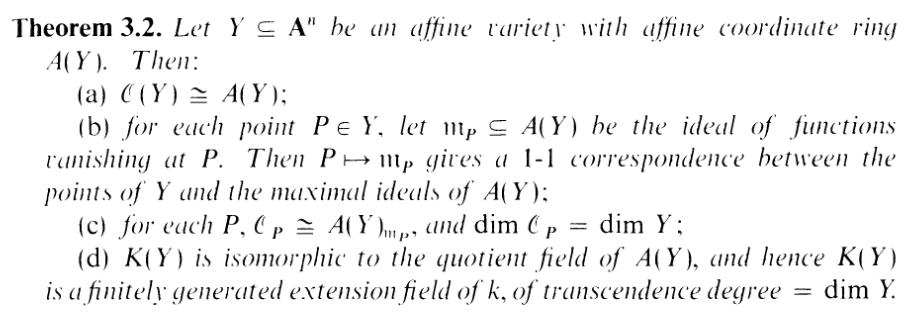I.3.1e
4/13/2021

I can't believe I'm finally fucking done with this exercise. "Umm, what about part d–" *Puts hand on
your mouth.* Shhhhh. It's okay. Go to sleep, reader, go to sleep. Chloroform? Nah, you must just be
really tired... You had a long day. I'm proud of you. You did such a good job today ♡.
Anyone who tries to tell you otherwise, just tell them to f##k off, okay? If anyone bothers you, tell me and I'll tell them to f##k off because they don't deserve you. You are a lovely, beautiful person ♡ :). There, there... you can rest now.. night night.. *unzips and starts filming*
....No, really, this part isn't so bad. We can characterize singletons in affine space with the following result:

Also, you should know that the ring of regular functions for a projective variety is just k:

(btw: I completely skipped reading the proof of the above theorem cause it looked too complicated
LOLOLOLOLLOLOLOLOLOLOLOLOLOLOLOLOLOLOLOLOL but seriously, don't follow my example)
And by the way, in case I didn't mention it earlier, the regular function ring for affine varieties is just the coordinate
ring:

Okay, theorem blast done. Now for the actual proof. Given a projective variety X, and an affine variety Y ⊂ An,
suppose there was an isomorphism between them. Well, I made a very useful lemma back in 3.1b (LEMMA 1)
that said this would induce an isomorphism of
 (Y ) = A(Y ) and
(Y ) = A(Y ) and
 (X) = k. Hence, we'd have
(X) = k. Hence, we'd have
| A(Y ) | ≃ k | ||
 k[x1,…,xn]∕I(Y ) k[x1,…,xn]∕I(Y ) | ≃ k | ||
| ⇐⇒I(Y ) is maximal | (since k is a field) | ||
| ⇐⇒Y is a singleton | (by 1.4.4) |
So, yea, that's it.